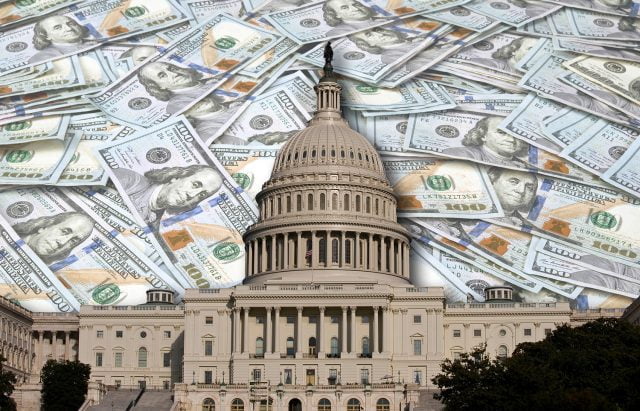
How Can Congress Pass a Tax Bill that Increases the Deficit?
Alicia H. Munnell is a columnist for MarketWatch and senior advisor of the Center for Retirement Research at Boston College.
Lawmakers have many ways to get around their own rules on fiscal discipline.
Tax issues are on the front burner this fall in Washington. In the past, tax reformers have often supported the notion of making any package “revenue neutral” by pairing cuts in tax rates with offsetting reductions in tax preferences to prevent increasing the deficit. While some still pay lip service to this goal, the Congressional budget blueprint that was adopted recently allows for a net tax cut of up to $1.5 trillion over the next 10 years.
I couldn’t understand how this could happen. Doesn’t Congress have rules to try to prevent changes that further increase the deficit? So I asked my colleague Andy Eschtruth, who has a much better understanding of budget procedures. He said that Congress has several rules. But, as the old adage says, “rules were made to be broken” or, in the case of Congress, perhaps it is better to say “waived.”
Most of these fiscal rules relate to the Senate and are intended to make it harder to increase budget deficits by requiring 60 votes to do so. First, the Senate has internal PAYGO rules that allow a Senator to object to any bill that would increase the deficit over 6 years or 11 years. However, the Senate can waive this rule through the budget blueprint it adopts, which is what happened this year. The blueprint itself only requires a simple majority vote and it sets in motion a fast-track process for considering legislation to implement its instructions. The resulting budget bill, which will include this year’s tax-cut package, also only requires a simple majority vote to pass the Senate.
Assuming that the tax cut stays within the $1.5-trillion-dollar target when it reaches the Senate floor, another potential hurdle awaits. This hurdle is the “Byrd Rule,” which allows a Senator to object to a bill that increases the deficit in any year after the 10-year time period typically used in budget debates. (Again, such a challenge can be waived by 60 votes.) Here’s where things often get creative. For example, with the Bush tax cuts in 2001, the bill made some of the cuts temporary, meaning that they expired by the end of the 10-year timeframe. Of course, temporary tax cuts have a way of being made permanent later on but, for getting around the rules, this tactic is effective. In the current process, both the House and Senate bills have adopted this tactic of having certain provisions expire to try to avoid a Byrd Rule challenge, but it is unclear at this point whether they have succeeded.
If a tax cut bill does make it through both the Senate and House and is signed by the President, one final fiscal safeguard becomes relevant. Congress is subject to a statutory PAYGO rule (different from the internal Senate rule mentioned above) that is designed to counteract policy changes that add to the deficit. Here’s how it works. If, on balance, Congress increases the deficit during the course of a fiscal year, an end-of-year sequester is triggered to reduce spending in specified programs. Programs subject to these automatic cutbacks include Medicare, farm subsidies, and social services block grants. (The notion is that the threat of triggering these cuts might prevent Congress from passing tax cuts that are unpaid for in the first place.)
By now, though, you will not be surprised to learn that Congress also has an escape hatch that allows them to pass legislation to prevent the spending cuts. Such legislation would be subject to a Senate filibuster, so it would require 60 votes to pass the upper chamber. But preventing automatic spending cuts would likely be a priority for many members of Congress, particularly during an election year. So, if the process gets that far, the sequester cuts may well never occur.
The bottom line is that, despite various rules aimed at tying its hands, a Congress that is determined to avoid fiscal discipline has many options at its disposal. In the case of the current tax reform debate, we will see what happens. But I wouldn’t bet on fiscal discipline winning out!






